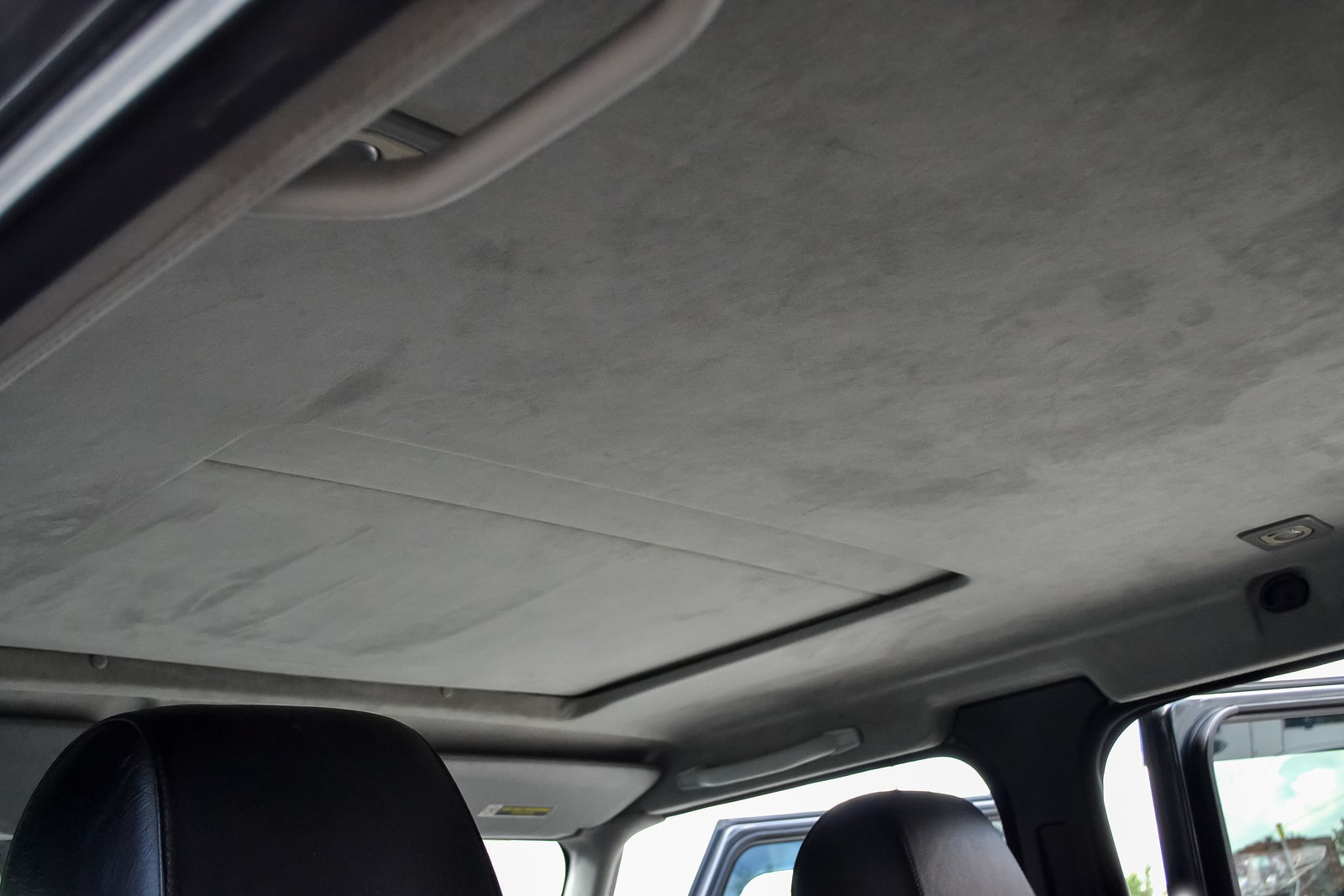A car’s headliner – also known as a car roof or ceiling liner – is the material that lines your car’s roof.
If your headliner becomes less efficient, then you need to invest in a professional headliner repair near you to stay safe.
Read on and find out how much a car headliner repair costs, which factors affect the cost and when you need to book a headliner repair.
Page Contents
- How Much Does a Car Headliner Repair Cost?
- Which Factors Affect the Headliner Repair Price?
- What Is a Car Headliner?
- Why Is My Headliner Sagging?
- Why Do I Need to Repair or Replace a Sagging Headliner?
- Can I Fix a Headliner Myself?
- Do I Need a Car Roof Liner Repair?
- How Long Does a Headliner Repair Take?
How Much Does a Car Headliner Repair Cost?
A headliner repair can cost anywhere from £100 to upwards of £325 to complete, including materials and labour costs.
If you own a premium vehicle, then you can expect to pay even more for a full replacement.
Which Factors Affect the Headliner Repair Price?
The cost of a headliner repair can vary depending on:
- The vehicle make and model
- The size of your car
- The garage you choose
If specialist materials are required to repair your roof liner at a garage that specialises in your car make, this could actually end up being cheaper than booking with a local garage.
What Is a Car Headliner?
A car’s headliner – also known as a car ceiling or roof liner – is the material that lines your car’s roof.
Made from fabric and foam and stuck down with polyurethane, a car roof liner can make your vehicle look nice whilst reducing noise and being an important safety feature.
The headliner attaches to the bare fibreglass on the inside of your roof, helping to make your car quieter and more comfortable in hot and cold weather.
The most common materials that make up a headliner are tricot knit fabric, melted polyurethane foam and a backing board – all of which are held together with glue and secured to the inner roof.

Why Is My Headliner Sagging?
Over time, the lining can detach from the backing board – this is known as ‘sagging’.
A sagging car headliner can be caused by general wear and tear, water damage or physical force.
Other factors include extreme heat or humidity and old age.
If your car has a sunroof, the risk of sagging will increase as moisture can leak into the roof and speed up lining deterioration.
A sagging headliner is usually caused by the layer of glue drying out.
Why Do I Need to Repair or Replace a Sagging Headliner?
If your roof lining is sagging, you will be at greater risk of injury or accident.
What’s more, your car will be less energy and fuel-efficient if the headliner isn’t sealed properly.
Bare fibreglass can conduct more hot or cold air into the cabin, reducing the impact of the air conditioning and heater.
You will have to use them longer to get the benefits and your fuel consumption will increase as a result.
By fixing a sagging car headliner immediately, you can save yourself money and make your car more fuel-efficient.
Can I Fix a Headliner Myself?
Whilst there are short-term fixes to headliner problems, these should not take the place of a full headliner replacement.
If the foam is rotten or missing, the headliner is sagging in multiple places or the damage is substantial, you should seek professional help.
You should not carry out a full headliner replacement yourself, as this can compromise the safety of your vehicle.
All that being said, in the short term you can pin or tack your headliner using sewing pins, drawing pins or safety pins.
Gently press them into the fabric to secure it against the other layers.
Ensure the headliner is secure before you let go.
This can help to remove the sag in just a few minutes, though it won’t be that aesthetically pleasing.
Alternatively, you can replace the glue that may have dried out.
Specialist headliner adhesive is cheap and easy to find, but you can also use a hot glue gun if you’re careful.
Again, this is a quick and simple fix, but it won’t always solve the problem – especially if the foam has rotted away – and may be a very big repair.
You can also try a staple gun and hairspray, double-sided tape or steam cleaning as a temporary solution to the problem.
Make sure that you choose the right method for your situation and research the suitability of your repair before you begin – you don’t want to exacerbate the problem.
Remember, if your headliner is sagging excessively, you should ask a professional to do this for you.
A full headliner replacement is likely to be a good investment to ensure the job is done right by a professional.
Do I Need a Car Roof Liner Repair?
Your car may need a roof lining repair if you begin to hear excessive engine noise from inside your car.
A repair may be necessary if the vehicle interior feels cold, too, as the roof lining may be becoming less effective.
How Long Does a Headliner Repair Take?
A car headliner repair can take a few hours to complete.






